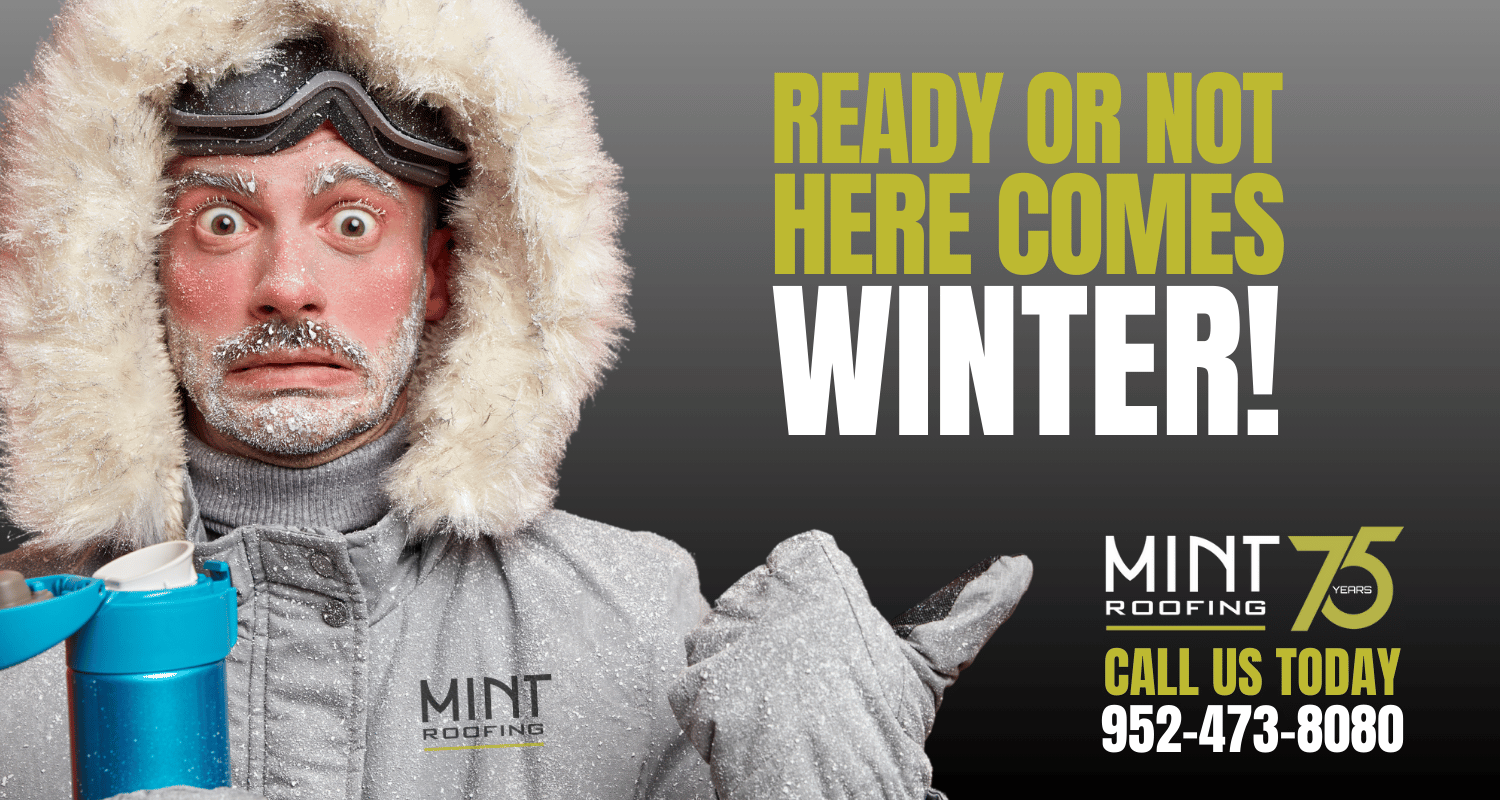As winter rolls in, commercial building owners face unique challenges when it comes to maintaining their flat roofs. One of the most significant concerns is the impact of early winter and early spring snowfall on these structures. In this blog post, we’ll explore why snow load on flat roofs can be particularly problematic and why regular roof inspections are crucial for preventing costly damage.
The Hidden Danger of Wet Snow
While many people associate winter with light, fluffy snow, the reality is that early winter and early spring snowfalls often bring heavier, wetter snow. This type of precipitation contains a higher moisture content, making it significantly denser and heavier than its mid-winter counterpart. For flat commercial roofs, this presents a unique challenge.
Flat roofs are designed to handle a certain amount of weight, but wet snow can quickly exceed these limits. A single cubic foot of wet snow can weigh up to 20 pounds, compared to just 3 pounds for dry, powdery snow.¹
When this heavy snow accumulates on a flat roof, it can put immense stress on the structure, potentially leading to sagging, leaks, or even collapse.

The Importance of Pre-Winter Roof Inspections
Given the potential risks associated with snow load on flat roofs, it’s crucial to have your commercial roof inspected before the winter season begins. We recommend scheduling an inspection in late fall to ensure your roof is in optimal condition to withstand the upcoming winter weather.
During a pre-winter inspection, experienced technicians should:
- Check for existing damage or weak spots
- Ensure proper drainage systems are in place and functioning
- Verify the integrity of the roof membrane
- Assess the overall structural stability of the roof
Identifying and addressing any issues before the snow starts falling can significantly reduce the risk of winter-related roof damage.
Spring Thaw: A Critical Time for Roof Assessment
While pre-winter inspections are essential, having your roof inspected after the spring thaw is a good idea, particularly after a harsh winter with lots of snowfall. Winter weather can take a toll on even the most well-maintained roofs, and the transition to spring can reveal hidden damage.
A post-winter inspection allows professionals to:
- Identify any areas where snow and ice may have caused damage
- Check for signs of water infiltration or leaks
- Assess the overall performance of your roof during the winter months
- Recommend any necessary repairs or maintenance
Real-World Examples: The Cost of Neglect vs. The Value of Prevention
To illustrate the importance of regular roof inspections, let’s consider two contrasting scenarios:
Case Study 1: The Proactive Building Owner
Sarah, the owner of a large commercial warehouse, always prioritized regular roof maintenance. This fall, she scheduled a pre-winter inspection with a reputable commercial roofing company. During the inspection, the team discovered several areas where the roof membrane had begun to deteriorate and a partially clogged drainage system.
By addressing these issues promptly, Sarah avoided what could have been a disastrous winter. Had the problems gone unnoticed, the weakened membrane and poor drainage would likely have led to significant leaks during the winter thaw.
The potential damage could have easily cost tens of thousands of dollars in roof repairs and interior damage to stored inventory. Sarah’s proactive approach not only saved her money but also provided her with a sense of security and peace of mind.
Case Study 2: The Cost-Cutting Property Manager
In contrast, John, a property manager for a multi-tenant office building, faced with pressure to cut costs, decided to skip the annual roof inspection to save money. Despite warnings from his maintenance staff about ponding water on the roof, he felt the risk was minimal.
Unfortunately, John’s decision proved costly. In mid-March, after a heavy, wet snowfall, a section of the roof caved in under the weight of the accumulated snow.
The collapse caused extensive damage to the building’s structure and several tenants’ offices. The total cost of repairs, including business interruption claims from affected tenants, exceeded $500,000 – far more than the cost of many years of regular inspections and maintenance.
Conclusion: Don’t Gamble with Your Roof
We’ve seen firsthand how proper maintenance and regular inspections can save building owners from costly disasters. The snow load on flat roofs is a serious concern that shouldn’t be underestimated. By investing in pre-winter and post-winter inspections, you’re not just maintaining your roof – you’re protecting your entire building and everything inside it. Remember, prevention is always better than cure.
Don’t wait for a problem to become a catastrophe. Contact a reputable roofing company like Mint Roofing today to schedule your comprehensive roof inspection and ensure your commercial property is prepared for whatever weather comes its way.

FAQs
Q: How much snow can a flat roof safely hold?
A: The safe snow load for a flat roof depends on its design and local building codes. Typically, commercial flat roofs in the United States are designed to hold at least 20 pounds per square foot, but this can vary based on location and climate. Always consult with a structural engineer to determine the specific capacity of your roof.
Q: What are the signs that snow load is too heavy for a flat roof?
A: Warning signs include unusual sounds like creaking or popping, visible sagging or deflection of the roof, doors or windows that suddenly become difficult to open or close, and cracks appearing in walls or ceilings. If you notice any of these signs, evacuate the building immediately and contact a professional.
Q: How often should flat roofs be inspected for snow load issues?
A: Flat roofs should be inspected at least once a year. Fall is a good time for roof inspections to be sure your roof is in good shape and capable of many months of snow cover. Additional inspections may be necessary after heavy snowfalls or extreme weather events.
Q: Can snow melting systems be installed on flat commercial roofs?
A: Yes, snow melting systems can be installed on flat commercial roofs. These systems typically use heated cables or mats to prevent snow accumulation and ice dams. While effective, they require professional installation and can increase energy costs, so their suitability should be assessed on a case-by-case basis.
Q: How does drainage affect snow load on flat roofs?
A: Proper drainage is crucial for managing snow load on flat roofs. A well-designed drainage system helps prevent water and melting snow from pooling, which can add significant weight to the roof. Regular maintenance of drains, scuppers, and gutters is essential to ensure they remain clear and functional during winter months.


